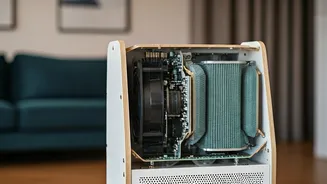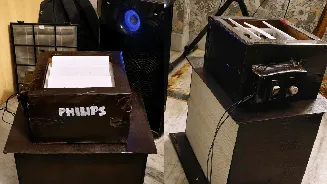The Ingenious Solution
Shukrant, a Delhi resident, built an air purifier with a simple yet effective design. He assembled it for approximately Rs 2,000, demonstrating a cost-conscious
approach to improving air quality. The project's impact was immediate, reducing the Air Quality Index (AQI) from a staggering 400 to a healthier 50 within just 15 minutes. This accomplishment earned him the moniker 'jugaadu scientist' for his resourceful and practical solution. The device, despite its unassuming appearance, proved highly effective, showcasing how simple components could deliver significant results in tackling air pollution.
Component Breakdown
The air purifier's effectiveness hinges on its core components, which are readily available and inexpensive. Shukrant's design used a 150mm exhaust fan to draw air into the device, where a HEPA filter played a vital role in trapping pollutants. This filter efficiently removes fine particles from the air, contributing to improved air quality. The entire setup was encased in cardboard, providing a simple yet functional structure. Wiring and an on-off switch were integrated to complete the functionality of the device. This straightforward build underlines the efficacy of readily available parts, creatively assembled to address a major environmental concern.
How It Works
Air purifiers function by a straightforward mechanism that Shukrant's DIY model perfectly replicates. They draw in polluted air from the surroundings and pass it through a series of filters. These filters capture harmful particles like dust, pollen, and other pollutants present in the air. Once the air is thoroughly filtered, the purifier releases cleaner, purer air back into the room. This process allows the device to remove pollutants from the air effectively. Shukrant's model utilized a HEPA filter to efficiently trap these tiny particles, contributing significantly to cleaner indoor air.
Impressive Performance
The most compelling aspect of Shukrant's DIY air purifier is its rapid and significant impact on air quality. He reported a dramatic decrease in the AQI, from a concerning level of 400 to a much safer 50, within only 15 minutes. This quick reduction indicates the efficiency of the design. This rapid improvement showcased how effective his homemade device was in removing pollutants. The quick turnaround highlights how accessible and impactful solutions can be created with a limited budget and easily sourced materials. The achievement underscores the potential of DIY innovation in addressing environmental issues.


















